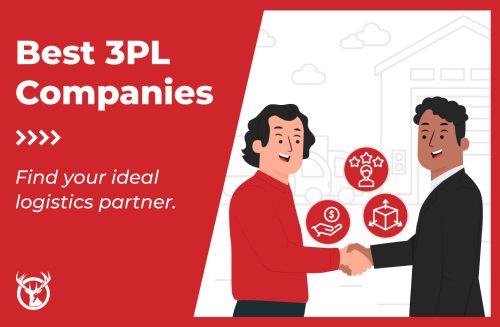Choosing a fulfillment company isn’t a one-size-fits-all decision. While they remain a huge player in the 3PL space, there is a lot of good Shipbob competitors to also consider.
One of ShipBob’s attractive offers is a robust network of warehouses that could bring some nice benefits to your business. But not necessarily. You may find that another fulfillment competitor is better able to tailor their services more closely to meet your needs.
| 3PL | Fulfillment costs | Accuracy | Networks | Support |
|---|---|---|---|---|
| ShipBob | Custom pricing | 99.95% accuracy rate, 99.96% on-time shipping rate | 50+ fulfillment centers, ships almost anywhere | Phone, email, and in-platform chat features |
| Red Stag Fulfillment | Custom pricing, no hidden fees | 100% accuracy backed by guarantees | 2 fulfillment centers, 96% of U.S. within 2 days, ships almost anywhere | Phone calls typically answered by people, and email |
| Amazon MCF | Per-unit pricing based on product size, weight, and shipping speed | 99.8% undamaged package delivery rate, >97% on-time delivery rate | 200+ fulfillment centers, available in 10 countries | 24/7 support with seller login, knowledge base |
| ShipMonk | Pricing based on monthly order volume | 99.99% fulfillment accuracy rate, <2% damage rate | 11 fulfillment centers, ships almost anywhere | Phone, live chat, email, knowledge base |
| LVK Logistics (previously ShipHero) | Flat rates with surcharges for certain items | WMS supports 99.99% accuracy rate | 9 fulfillment centers, ships within U.S. and Canada | Website case submission with login, knowledge base |
| Shipfusion | Custom pricing | 99.9% order accuracy rate, 99.9% on-time delivery rate | 4 fulfillment centers in U.S. and Canada | Website case submission, live chat |
ShipBob competitors
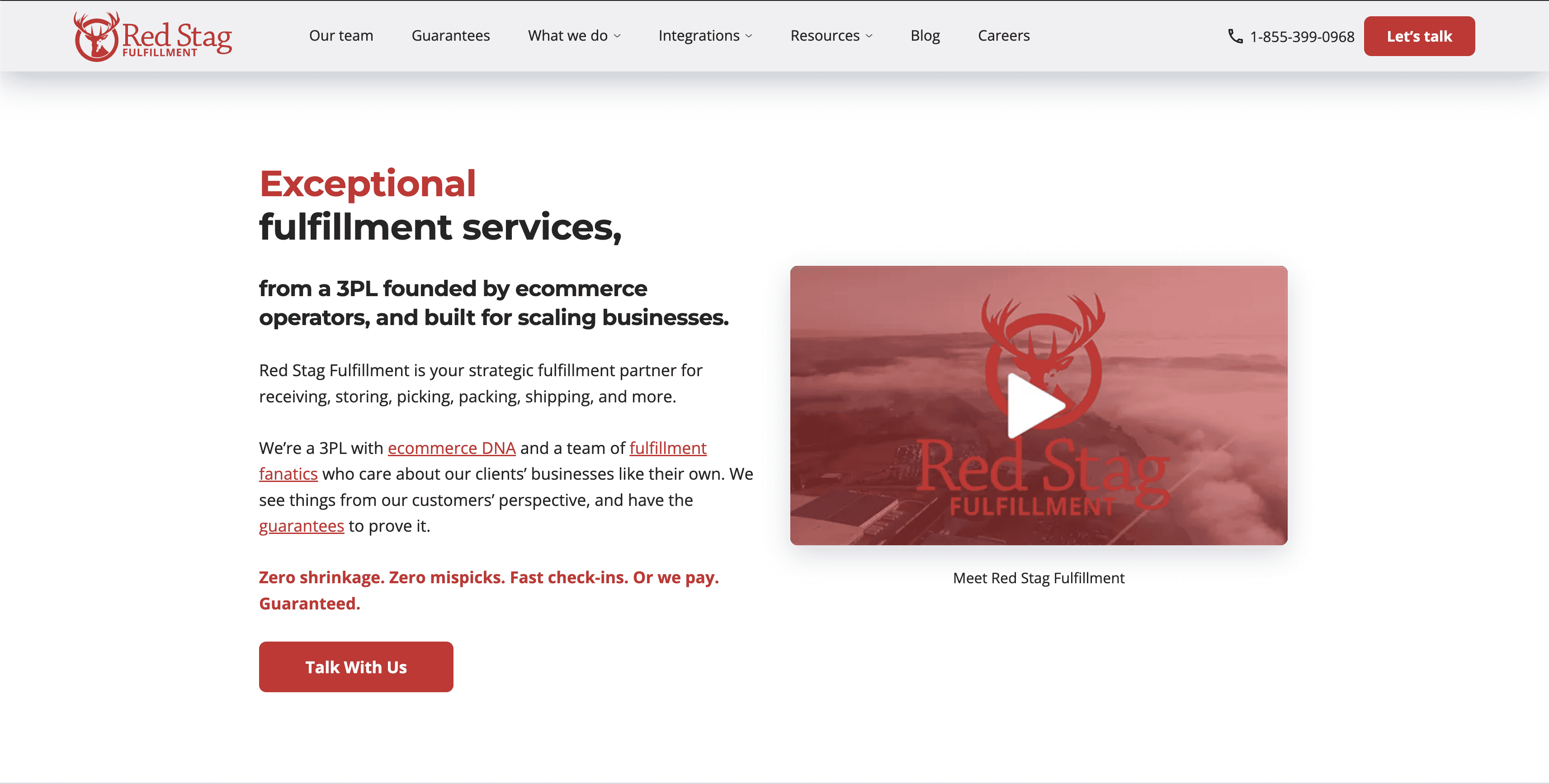
Red Stag Fulfillment
Sure, we might be showing our bias by placing ourselves at the top of this list. But we also might be one of the best ShipBob competitorss out there. You’ll have to decide for yourself.
Red Stag Fulfillment is an end-to-end fulfillment company that serves ecommerce brands and other retail businesses. The bulk of what we do revolves around warehousing, order fulfillment, picking and packing, and reverse logistics. We can also help with kitting and assembly prior to shipping, and inventory planning so your stock choices align with customer demand.
Over the past 10+ years, we’ve built a strong reputation for managing fulfillment for big, bulky, and heavy products. And yeah, we’re pretty darn good at it.
Get full visibility into your business operations with online store integrations, including Shopify, WooCommerce, BigCommerce, Amazon, and others. Red Stag can also build custom APIs for your store.
Red Stag Fulfillment fulfillment and shipping costs
Red Stag Fulfillment provides full pricing transparency so you can better understand (and control) your fulfillment costs. We craft customized agreements based on detailed insights into your company, so we can deliver exactly what you need—nothing more, nothing less—and help you maintain cost efficiency at scale.
We carefully chose our fulfillment center locations to help you reach more customers with fast delivery speed while also limiting your carrying and transportation costs. By placing our warehouses inland, away from major ports, you’re able to avoid the high prices and costly bottlenecks of those congested coastal areas.
With Red Stag, you can reach 96% of the U.S. within two days or less, helping you keep delivery speeds high and shipping costs low. Faster, accurate deliveries also support customer satisfaction, which can increase your topline revenue and lower customer acquisition costs.
We also offer performance guarantees that align our motivations with yours and hold us accountable to always doing what’s best for your business. On the rare occasion a mistake happens, Red Stag fixes it (at no cost to you) and pays you an additional fee for the inconvenience.
Because if we make a mistake, it hurts your business. And we believe it’s only right that it should hurt ours, too. That way, you can trust that our decisions and recommendations are always based on mutual benefit. No other fulfillment companies or competitors to ShipBob have guarantees that come even close to this.
Red Stag Fulfillment customer support and growth
Our dedicated team of experts helps you resolve issues quickly and discover opportunities to improve performance across all of your sales channels. Unlike most competitors to ShipBob, nearly everyone on our Client Success team started off working on the warehouse floor. They understand fulfillment inside and out and will proactively help you with things like maximizing inventory turnover, optimizing carrying costs, and preparing for peak seasons.
Reach out today to see how Red Stag can help your business.
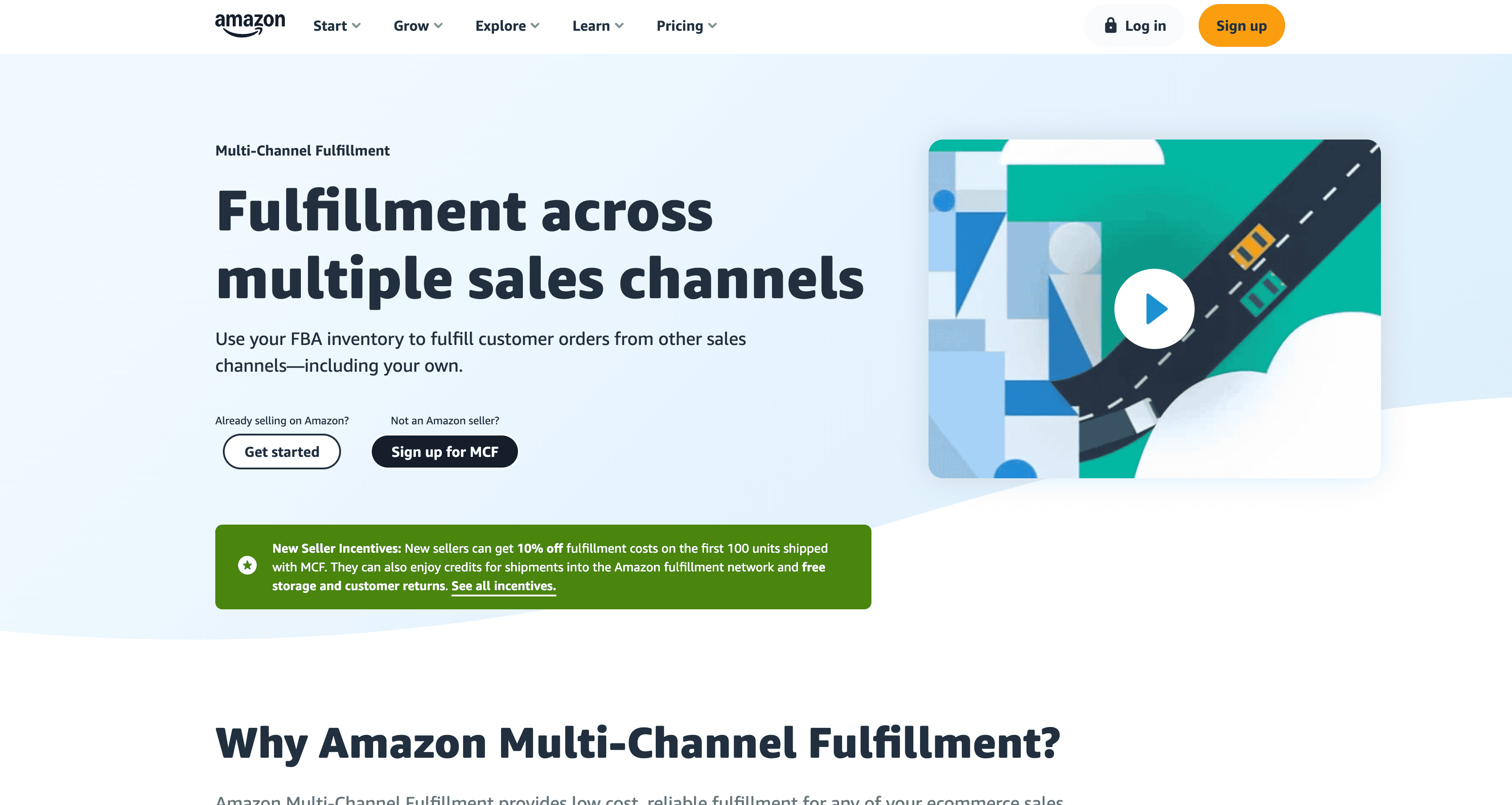
Amazon Multi-Channel Fulfillment
Amazon Multi-Channel Fulfillment (MCF) allows ecommerce sellers to fulfill orders from various sales channels using Amazon’s warehousing and distribution network. While Fulfillment by Amazon caters to Amazon sales specifically, MCF is open to all businesses who need its support.
It works by consolidating your inventory within its network, so you don’t have to worry about stock allocation or distribution. Based on marketplace sales data, it moves products to where it forecasts demand and fulfills orders for you, including final-mile delivery to customers.
Amazon MCF shipments and accuracy
With approximately 1.5 million workers across 2,000 warehouses, Amazon has the labor and resources to provide reliable fulfillment for any size business. High-volume sellers may appreciate the network effects of such a massive partner, while smaller companies can benefit from its scalability.
Amazon MCF provides three tiers of delivery options, including standard shipping, expedited shipping, and priority shipping. It says it has a 99.8% undamaged package delivery rate, based on data from small- and medium-sized businesses. It also claims more than 97% on-time delivery rates, which is only slightly lower than some competitors.
Amazon MCF cost considerations
Amazon MCF provides transparent pricing, but its prices can change frequently and you may get some unexpected charges if you don’t pay thorough attention to how product details impact pricing tables.
Compared to other ShipBob competitors, MCF offer less opportunity for customized cost-control measure, making profitability more challenging. For example, you might want to use a specific type of infill in your packages or compare cost-effectiveness between trucking carriers.
Amazon MCF can’t provide this flexibility because its operations depend on high levels of standardization to meet demand volumes. Working with an alternative 3PL for your Amazon fulfillment may be a better option if you need more control.
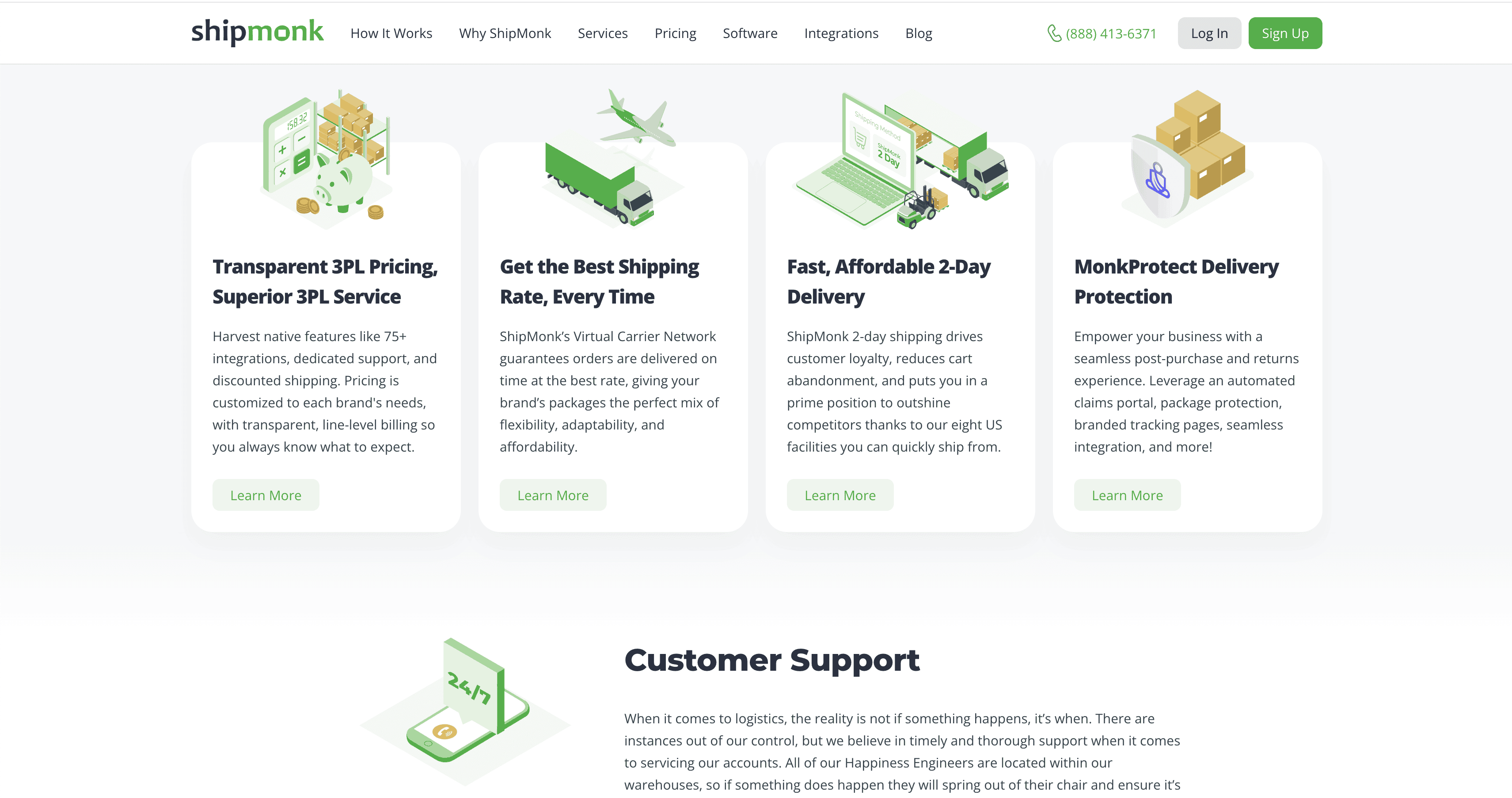
ShipMonk
ShipMonk focuses on reducing the complexity of supply chains by integrating fulfillment into a larger solution. With specialized services like customs brokerage and online store web development, it may be the right ShipBob alternative for businesses that need end-to-end help.
ShipMonk fulfillment services and cost
Key services from ShipMonk include centralized supply chain management on its platform, omnichannel fulfillment with automated warehouse processes, and real-time data and reporting features for cross-functional visibility. It charges by tiers determined by your monthly order volumes.
ShipMonk network and accuracy
The fulfillment company claims a 99.99% order accuracy rate and less than 2% inventory shrinkage due to damages. With 11 warehouses in North America and the United Kingdom, it can ship to almost every country in the world.
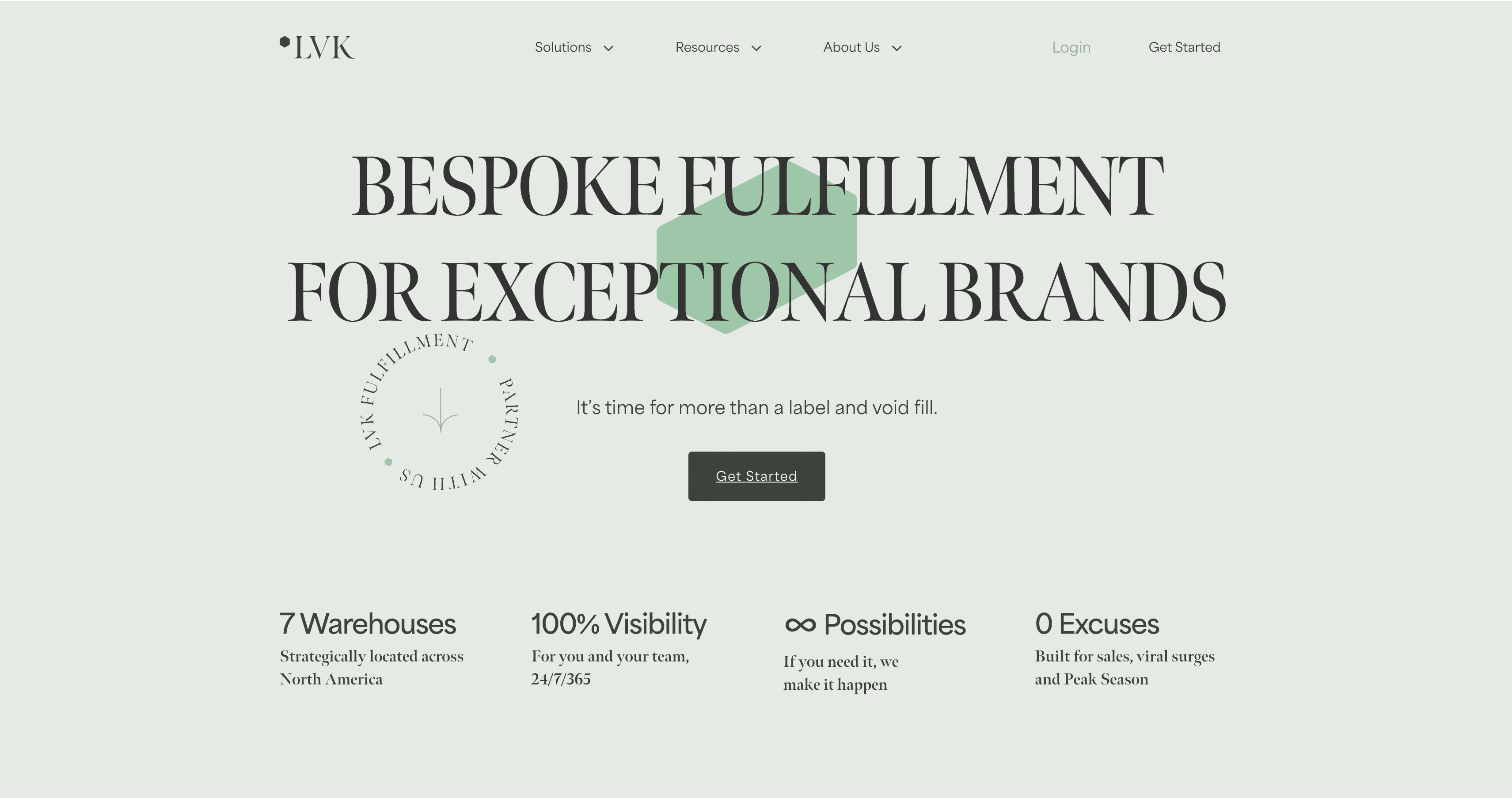
LVK Logistics (formerly ShipHero)
ShipHero has built its fulfillment business on the strength of its warehouse management software. With data at the heart of its original service offer, their subsidiary LVK Logistics focuses on supply chain visibility and service-level agreement (SLA) compliance. The WMS product was released more than a decade ago, with the fulfillment arm launching a few years later.
ShipHero network capabilities and cost
The 3PL charges flat rates for fulfillment with surcharges for certain items. Extra charges can add up quickly, so it’s important to review what that means for your business at scale. If you typically ship large or heavy items, you may benefit more from fulfillment partner that can help you optimize logistics costs based on size and weight.
ShipHero has nine fulfillment centers and ships within the U.S. and Canada. It claims a 3.5 day average fulfillment time and a 35% decrease in warehousing costs compared to other services of its size.

Shipfusion
Shipfusion manages fulfillment and limited freight services for ecommerce sellers, brick-and-mortar retailers, and wholesale companies. With cold chain equipment and networks, it can serve regulated industries that other 3PLs might not be able to help. It also offers lot tracking, temperature control, and reverse logistics for regulated products.
Shipfusion costs and accuracy
Shipfusion fulfills orders for customers in the U.S. and Canada, operating out of four warehouses. It offers a 99.9% order accuracy rate and 99.9% on-time delivery rate. Pricing varies based on your products and services.
About ShipBob

ShipBob offers multi-channel ecommerce fulfillment services, including warehousing, inventory management, picking and packing, shipping, and returns. It primarily focuses on direct-to-consumer fulfillment for ecommerce brands, but it also provides B2B services, like wholesale order fulfillment and retailer dropshipping. It integrates with Shopify, Amazon, and more than a hundred other ecommerce platforms, and its transparent pricing structure reflects total fulfillment costs with no hidden fees.
ShipBob logistics
With ShipBob, you can store inventory across more than 50 global fulfillment centers and ship to almost every country using standard and expedited shipping options. In the U.S., you benefit from two-day shipping, regardless of how many fulfillment centers you use, and rely on a 99.96% on-time shipping rate and 99.95% accuracy rate.
ShipBob customer support
ShipBob provides 24/7 customer support via phone, chat, and email to assist with questions, issues, and exceptions. It also has extensive training resources, including documentation, videos, and webinars, that can help you with topics like inventory management, choosing a warehouse management system (WMS), and improving customer satisfaction.
ShipBob guarantees
Other considerations for choosing an alternative to ShipBob
Make sure your warehouse management and shipping processes keep up with your business needs by choosing a fulfillment company that can grow with you. Use these questions to evaluate the ShipBob alternatives and find the right one for you.
Industry experience
Industry knowledge can be vital to smooth operations, including effective problem-solving when issues arise. When considering a new partner, ask the following questions.
- How many clients do you serve in our industry?
- Can you describe industry challenges you’ve successfully navigated?
- What improvements do you offer for common industry challenges?
- Do you have industry-specific certifications?
- How do you keep up with industry change?
Specialized services
Some ecommerce sellers require specialized 3PL partners. For example, if you sell large or heavy items, you would need help optimizing packages for size and weight. These partnerships can help create operational and cost efficiencies. Here are some questions to ask:
- What specialized equipment do you have?
- Can you elaborate on technologies or tools you use?
- Can you share success stories related to brands similar to ours?
- What ongoing training and certifications does staff undergo?
- How do you approach unique challenges in this specialization?
Accuracy rates and guarantees
Accuracy is one of the most important key performance indicators (KPIs) in fulfillment. Not only does it underpin customer satisfaction, but it also helps avoid cost creep and time lost to error resolution.
When talking to fulfillment companies, ask additional questions to verify accuracy claims.
- What is your track record for accuracy in both order fulfillment and delivery?
- What measures are in place to handle unforeseen challenges to accuracy?
- How do you handle delays and other exceptions?
- How do you monitor, manage, and improve accuracy?
- Do you offer any guarantees of shipment accuracy or on-time deliveries?
- Can you share times when accuracy or exception management exceeded client expectations?
Service capacity
A 3PL’s size and experience can make a difference in your brand’s ability to fulfill orders accurately, but it’s not the only thing to consider. Pay attention to how a company manages its service capacity, which refers to available fulfillment center space, logistics partnerships, and routing options.
This can be important because capacity can decrease when demand is high, causing crunches that can raise prices. Ask about experience and management tactics so you know what to expect when conditions change.
- How much warehouse square footage do you have?
- How do you ensure labor availability?
- How has your company adapted to changes in fulfillment and logistics?
- Can you share any stories of partnerships that required significant scalability?
- What do you do to manage capacity crunches during peak seasons?
- Do you increase costs during times of limited capacity?
Integrations and technology
Find the right balance of automation and hands-on control to keep your business running smoothly. You want to make sure integrations and technology offer the features you really need. Get detailed with questions about connectivity and visibility.
- Can you describe the digital workflows for omnichannel or multi-channel fulfillment?
- How quickly do product listings update for my customers and in my dashboard?
- What notifications do you provide when inventory gets low?
- Can you help me automate replenishment orders?
- How can you help me avoid stockouts and excess inventory?
Geographic distribution
Strategically located warehouses can optimize transportation costs and reduce lead times. Ideally, warehouses are close enough to your customers for two-day shipping without requiring you to allocate stock to an excessive number of facilities.
In some cases, the more warehouses you manage, the more risk you incur. Poor inventory management can leave you stretched thin, undercutting profit margins. Ask these questions to inform your location strategy.
- Where are your primary distribution centers located?
- How do you optimize transportation routes to help keep my costs low?
- How do you optimize last-mile delivery speeds in different regions?
- What level of logistics visibility do you provide?
Network partnerships
Fulfillment networks can be complex, with multiple handoffs during transportation impacting shipment timing and accuracy. Check that your 3PL has a robust network of partners to offer the services and flexibility you need to keep customers satisfied. Ask these questions about network partnerships:
- Can you provide information about key partners in transportation and technology?
- How do you evaluate and create accountability with your network partners?
- Can you describe a situation where you relied on your network to resolve a critical logistics issue?
Landed cost optimization
Not every fulfillment company lets you control costs. Some competitors to ShipBob offer per-unit, flat-fee, or tiered pricing, which can be less transparent than customized quotes. Frame your questions to cover all the bases.
- How do you structure pricing for different services?
- How often do you increase storage and fulfillment rates?
- What key performance indicators (KPIs) do you use to measure cost efficiency?
- Do you pass on volume-based or other discounts from carriers?
- How often do you collaborate with clients to update cost savings opportunities?
- Can you share ways you’ve helped other ecommerce brands achieve cost savings?
Continuity planning
Continuity planning isn’t just for disasters. Fulfillment and logistics can be full of unforeseen events and disruptions. Discover how 3PLs provide continuity and minimize the impact of exceptions.
- What plans are in place for business continuity and disaster recovery?
- How do you involve clients in continuity planning ahead of time?
- How do you share information during emergencies or unforeseen events?
- How often do you review and update continuity plans?
- Can you share stories of when your continuity planning was tested?
Work with Red Stag Fulfillment
ShipBob is known as a leading provider of fulfillment services for ecommerce sellers, but sometimes you need a more personalized relationship. By working with a reputable ShipBob competitor Red Stag, you can benefit from a 3PL that’s committed to building long term relationships founded on trust and high-quality service.
Hands-on support from supply chain experts can extend far beyond pick, pack, and ship. Red Stag Fulfillment can help you streamline processes and discover opportunities to cut costs and increase profits.
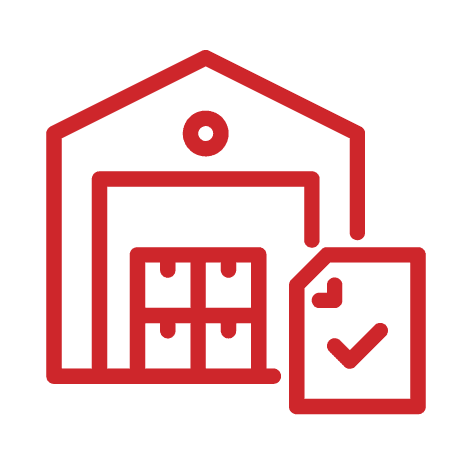
Warehousing
Keep product availability and inventory turnover high, with “dock-to-stock” receiving in two days or less. Strategically located warehouses can help lower storage costs, while our inventory accuracy guarantees reduce your risks.

Order fulfillment
Fulfill orders from all of your sales channels. Consolidated inventory can streamline fulfillment for accuracy and delivery speeds that meet customer expectations and help earn repeat business.

Shipping
Reduce costs by moving packages across fewer shipping zones. Shorter distances can limit the risks of costly delays, too. At scale, you could free up enough cash to invest in new products, channels, or other growth initiatives.

Kitting and assembly
Create new opportunities for sales and customer loyalty. With strategic inventory allocation, you can offer subscription boxes, promotional bundles, and upsells. You can also optimize certain logistics costs with parts assembly in our warehouses.

Inventory planning
Use your sales and transportation data to foster growth. Expert inventory planning support can help you place precise orders, maximize pricing, and keep cash flowing.
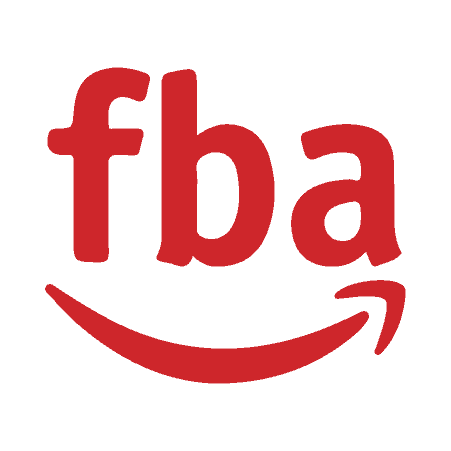
Amazon fulfillment
Get the help you need for Amazon’s Seller-Fulfilled Prime program. Red Stag helps you comply with the marketplace’s rules while capturing growth opportunities for your business.
Reach out today to see how Red Stag can help your business.






